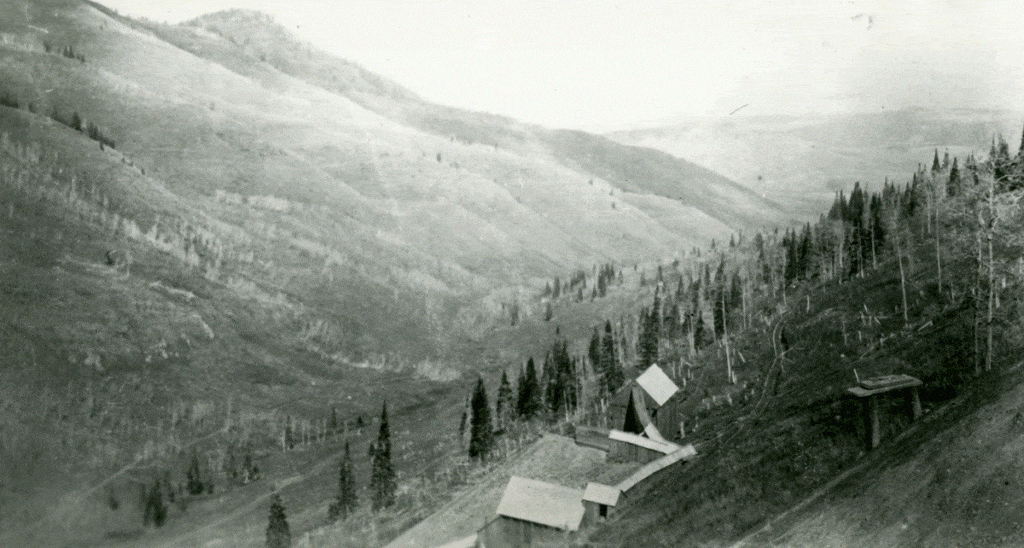Park City was known, of course, for our rich silver deposits long before we could co-lay claim to the best powder on earth. But one unanswered question remains unsolved: who first discovered ore in what would become Park City?
Since we don’t truly know the answer to this question, the Museum has skirted the answer by noting that the Flagstaff Mine, eventually owned and operated by E.P. Ferry and the Marsac Company (based in Grand Haven, Michigan), was the first ore-producing mine in the Park City area.
More than likely, Native peoples of the Northern Shoshone, Goshute, or Ute tribes probably found ore deposits in the time they spent in Park City in the warmer months prior to the arrival of Mormon settlers. While they might have used some of what they found, they did not create any operations to excavate it from the earth, nor did they commercialize the endeavor. That environmental exploitation would be left to the white American and European settlers and colonizers.
While there is also no record of exactly who found the first ore, several accounts have been documented all around the same time frame. The most common account is that of Colonel Patrick Connor encouraging his men to prospect for gold in their downtime – several of whom crested over the the Wasatch Range through Big Cottonwood Canyon and planted a stake in the ground for what would become the Flagstaff Mine. That event took place in 1868, though they could not return until 1869.
Also in 1869, in most recountings, Rufus Walker and Ephraim Hanks found an ore body that would become the Pinyon (or Pinion) Mine. That mine also took over the location of the Green Monster Mine, a deposit of copper, which is said to have been discovered by Hanks as well (along with Louis Simmons), but a few years earlier – in 1866. These mines, of course, were all further west than the mines that made Park City famous, closer to Bonanza Flat at Park City’s outskirts. The Pinyon was later taken over by the Crescent Mining Company, which was subsequently taken over by the Silver King Mining Company.

Credit: Park City Historical Society & Museum, Fraser Buck Collection
Walker and Hanks were also both involved in the discovery and development in the Walker and Webster Mine in 1869, which was slightly closer to town, nearby where the Mid Mountain Lodge at Park City Mountain Resort sits today.
Regardless of the exact first discovery, one name that keeps popping up in most of the examples is Ephraim Hanks. Hanks, who originally ran a stagecoach stop, Pony Express station, and trading post at the Little Dell reservoir, was an early settler of the Park City area and had his hand in many of the early mining stakes. He is also one of the most colorful, wild, and interesting figures in Mormon history.
The Park City Museum is hosting part two of a lecture on the life of Ephraim Hanks, given by historian Sally Elliott and Summit County attorney (and Ephraim Hanks descendent) Margaret Olsen titled “Ephraim Hanks, Early Park City Pioneer Part 2.” It will take place at the Museum’s Education and Collections Center at 2079 Sidewinder Drive on Wednesday, February 1 from 5 to 6 p.m. Please RSVP here – this lecture is anticipated to reach capacity.
Sources:
“Mining Matters.” Park Record, August 1, 1924.
“Facts Concerning Summit County.” Park Record, September 2, 1927.
“The History of Mining at Park City.” Park Record, January 3, 1946.
“’Utah’s Mining Industry’ Tells Early History of Mining in Park.” Park Record, November 23, 1967.
“Park City Has Roaring Early History.” Park Record, June 4, 1970.
Elliott, Sally. “Park Record Traveler: Park City’s earliest history is just a romp away.” Park Record, December 20, 1997.
Mayes, Bea. “Way We Were: Silver, stagecoaches from the past.” Park Record, February 9, 2011.
Mayes, Bea. “Way We Were: Foreign capital funds early Park City Mines.” Park Record, August 31, 2011.